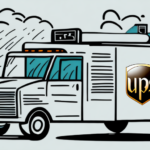Overview of UPS Shipping Options
UPS provides a wide range of shipping services tailored to meet varying needs, whether you require economy shipping or expedited delivery. Understanding these options can help you choose the most appropriate and cost-effective method for your shipments.
Domestic Shipping Services
- UPS Ground: The most affordable option for shipments within the United States, offering transit times between 1-5 business days based on distance.
- UPS 2nd Day Air: Provides delivery within two business days, balancing speed and cost for less urgent shipments.
- UPS Next Day Air: Guarantees next business day delivery by 10:30 AM or 12:00 PM, ideal for urgent and high-priority packages.
International Shipping Services
- UPS Worldwide Express: Offers fast international delivery with guaranteed arrival times, typically within 1-3 business days.
- UPS Worldwide Expedited: A cost-effective option for less urgent international shipments, delivering within 2-5 business days.
- UPS Standard to Canada: Provides reliable shipping to Canada with transit times ranging from 2-7 business days.
For more detailed information on each shipping option, visit Next Day Air.
Key Factors Influencing UPS Shipping Costs
The cost of shipping with UPS is influenced by several critical factors. Understanding these can help you estimate expenses accurately and identify opportunities for savings.
Package Weight and Dimensions
Shipping costs increase with the weight and size of the package. UPS Ground, for instance, has a maximum weight limit of 150 pounds and a maximum length of 108 inches.
Shipping Origin and Destination
The distance between the origin and destination affects the shipping cost. Longer distances typically result in higher fees due to increased transportation expenses.
Choice of Shipping Service
Different UPS services come with varying price points. Expedited services like UPS Next Day Air are more expensive compared to standard options like UPS Ground.
Additional Services
Services such as signature confirmation, insurance, and special handling can add to the overall shipping cost. For example, requiring signature confirmation ensures secure delivery but incurs an extra fee.
Calculating and Optimizing UPS Shipping Costs
Accurately calculating shipping costs and employing strategies to reduce them can lead to significant savings.
Using UPS Online Tools
UPS offers online calculators that consider package weight, dimensions, origin, destination, and chosen service to estimate shipping costs. Utilize these tools to plan your shipments effectively.
Optimizing Package Weight and Size
Efficient packaging can reduce both weight and dimensional size, leading to lower shipping costs. Use appropriately sized boxes and minimize unnecessary packaging materials.
Consolidating Shipments
Shipping multiple packages together can often result in bulk discounts. Consolidating shipments helps in negotiating better rates with UPS.
Leveraging Volume Discounts
Businesses with high shipping volumes can negotiate discounted rates directly with UPS, leading to substantial cost reductions.
For comprehensive guidance on calculating shipping costs, refer to UPS shipping rates.
Understanding UPS Shipping Fees and Insurance
Beyond basic shipping costs, UPS imposes additional fees and offers insurance options to protect your shipments.
Additional Shipping Fees
- Residential Delivery Fee: Applied when delivering to a residential address instead of a commercial one.
- Fuel Surcharge: A variable fee based on current fuel prices, affecting all shipments.
- Address Correction Fee: Charged when UPS needs to correct or complete an incomplete address.
UPS Insurance Options
UPS provides insurance coverage for lost, stolen, or damaged packages, with premiums based on the declared value of the shipment. It's crucial to understand the limitations and exclusions of UPS insurance to ensure adequate protection:
- Coverage may not apply to certain high-value items like antiques or jewelry.
- Proper packaging is essential to qualify for insurance claims.
For more details on insurance options, consult UPS insurance coverage.
Comparing UPS Shipping Rates with Other Carriers
Evaluating UPS rates against other carriers like USPS, FedEx, and DHL can help determine the most cost-effective shipping solution for your needs.
Delivery Time vs. Cost
Different carriers offer varying balances between delivery speed and cost. For instance, FedEx may provide faster same-day options at a higher price point, while USPS might offer more economical rates for smaller packages.
Service Reliability and Tracking
UPS is known for its reliable tracking system, but other carriers also offer comprehensive tracking features that can be compared based on your priorities.
Specialized Services
Consider the specialized services each carrier offers, such as DHL’s global reach or FedEx’s temperature-controlled shipping, depending on your specific requirements.
Conduct a comparative analysis to ensure you’re selecting the best carrier for your shipping needs.
International Shipping with UPS: Customs Fees and Duties
When shipping internationally, additional costs such as customs fees and duties must be considered. These charges are determined by the destination country and can vary widely.
Estimating Customs Fees
Use UPS’s online tools to estimate potential customs fees based on the value and type of goods being shipped. Proper documentation is crucial to avoid unexpected charges.
Understanding Import Regulations
Each country has its own set of import regulations and prohibited items. Researching these regulations beforehand can prevent delays and additional fees.
Required Documentation
Ensure all necessary documents, such as commercial invoices and certificates of origin, are accurately completed and included with your shipment to facilitate smooth customs clearance.
For more information on international shipping and customs, visit Customs Fees and Duties.
Managing Shipments: Tracking, Handling Lost or Damaged Packages
Effective shipment management involves tracking packages and knowing how to handle issues like loss or damage.
Tracking Your UPS Shipment
UPS provides a tracking number for each shipment, allowing you to monitor its progress in real-time through the UPS website or mobile app.
Handling Lost or Damaged Shipments
If a package is lost, stolen, or damaged during transit, UPS has a claims process in place to reimburse the value up to the declared amount or insurance coverage. Promptly filing a claim with necessary documentation accelerates the resolution process.
Preventative Measures
To minimize the risk of lost or damaged packages:
- Use sturdy packaging materials.
- Opt for insurance on high-value items.
- Choose tracking and signature confirmation options.
Additional Tips for Reducing UPS Shipping Costs
Implementing cost-saving strategies can significantly reduce your overall shipping expenses with UPS.
Efficient Packaging
Use the smallest possible packaging that adequately protects your items. Consider UPS's flat rate boxes for predictable pricing regardless of weight.
Schedule Regular Shipments
Consistently using UPS services can make you eligible for discounted rates and priority service options.
Negotiate with UPS
High-volume shippers can negotiate better rates and terms directly with UPS representatives.
Utilize Third-Party Shipping Services
Third-party platforms may offer discounted rates for UPS services, providing another avenue for cost savings.
Conclusion
Understanding and optimizing UPS shipping options, costs, and fees can lead to significant savings and more efficient logistics management. By leveraging UPS’s tools, comparing carriers, and implementing best practices in packaging and shipment management, both businesses and individuals can enhance their shipping experience while keeping expenses in check.






















